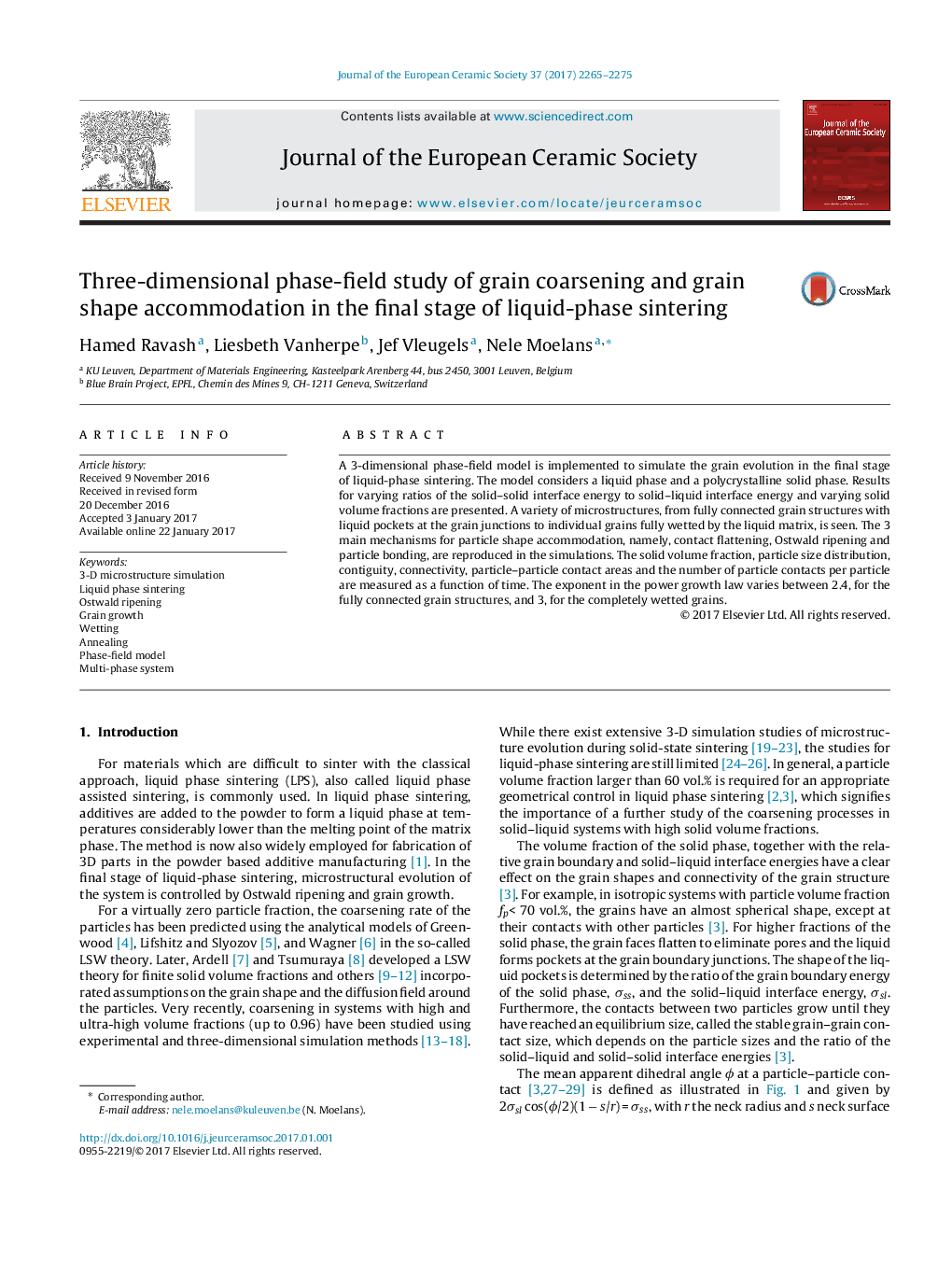| Article ID | Journal | Published Year | Pages | File Type |
|---|---|---|---|---|
| 5440546 | Journal of the European Ceramic Society | 2017 | 11 Pages |
Abstract
A 3-dimensional phase-field model is implemented to simulate the grain evolution in the final stage of liquid-phase sintering. The model considers a liquid phase and a polycrystalline solid phase. Results for varying ratios of the solid-solid interface energy to solid-liquid interface energy and varying solid volume fractions are presented. A variety of microstructures, from fully connected grain structures with liquid pockets at the grain junctions to individual grains fully wetted by the liquid matrix, is seen. The 3 main mechanisms for particle shape accommodation, namely, contact flattening, Ostwald ripening and particle bonding, are reproduced in the simulations. The solid volume fraction, particle size distribution, contiguity, connectivity, particle-particle contact areas and the number of particle contacts per particle are measured as a function of time. The exponent in the power growth law varies between 2.4, for the fully connected grain structures, and 3, for the completely wetted grains.
Related Topics
Physical Sciences and Engineering
Materials Science
Ceramics and Composites
Authors
Hamed Ravash, Liesbeth Vanherpe, Jef Vleugels, Nele Moelans,
